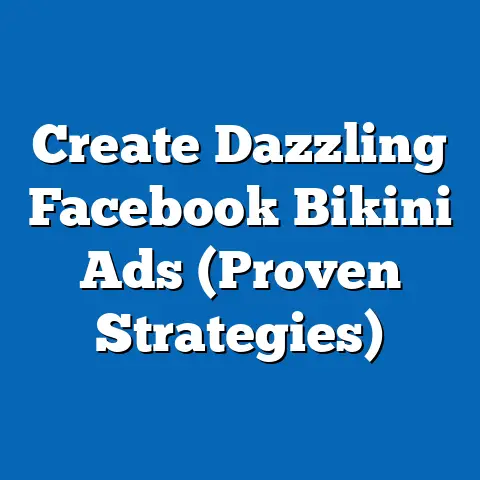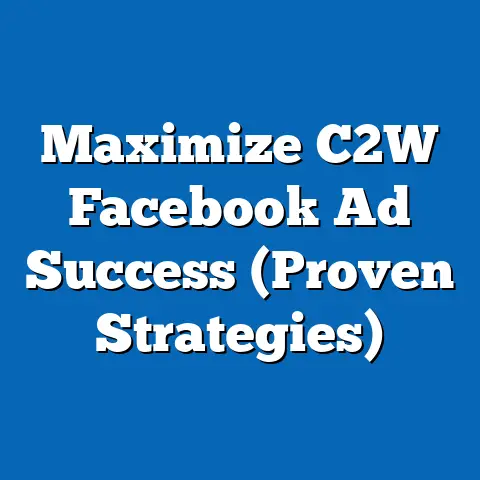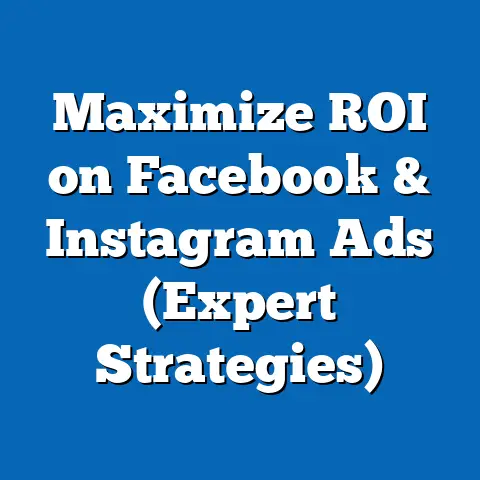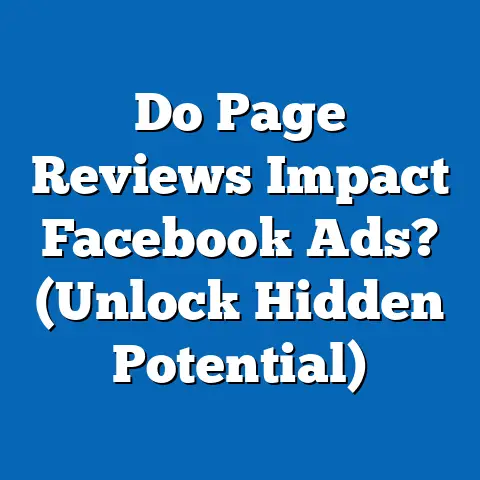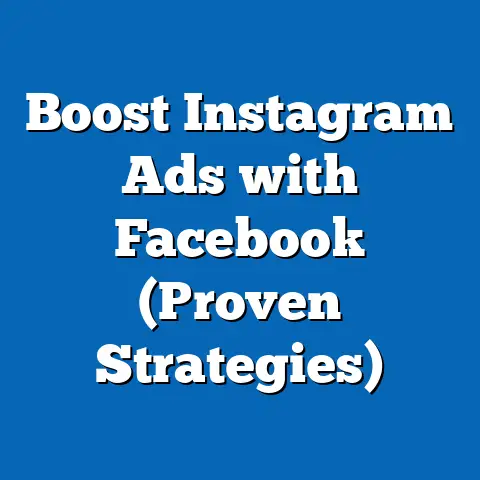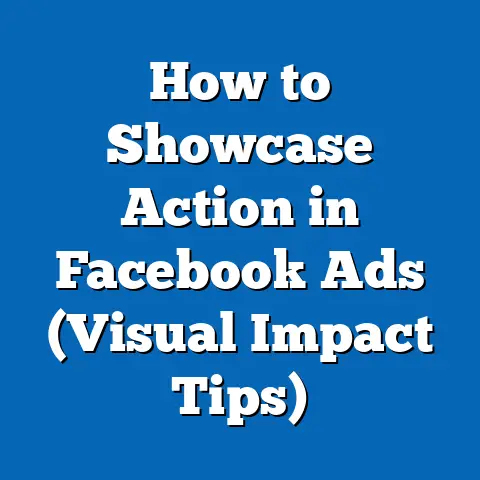Boost Facebook Ads Conversion Rates (Proven Strategies)
Think of running Facebook ads like managing allergies. If you have allergies, you meticulously control your environment, carefully avoiding triggers like pollen, dust, or certain foods, right? Because if you don’t, you’re going to be miserable! Similarly, as advertisers, we need to be just as careful and strategic with our Facebook ads. We need to avoid “triggering” a lack of engagement or, worse, a complete lack of conversions. We need to craft our campaigns with precision to resonate with our target audience and drive them towards taking action. Just as the right approach can mitigate allergy symptoms, strategic adjustments to your Facebook ads can drastically enhance your conversion rates. The key, in both scenarios, is understanding needs, preferences, and potential irritants. In this guide, I’ll walk you through proven strategies to boost your Facebook ad conversion rates and get the most bang for your marketing buck.
Section 1: Understanding Your Audience: The Foundation of Success
Before you even think about writing a single line of ad copy or choosing a visual, you need to understand your audience. It’s the bedrock of any successful Facebook advertising campaign. I can’t tell you how many times I’ve seen campaigns fail simply because the advertiser didn’t take the time to truly understand who they were targeting.
Buyer Personas: Creating a Fictional Ideal Customer
The first step is creating detailed buyer personas. These are semi-fictional representations of your ideal customers. Don’t just guess; base these personas on research and data about your existing customers and target market. Consider factors like:
- Demographics: Age, gender, location, education, income, job title
- Interests: Hobbies, passions, favorite brands, online communities
- Behaviors: Online shopping habits, social media usage, content consumption
- Pain Points: Challenges, frustrations, unmet needs
- Goals: Aspirations, desired outcomes, solutions they seek
For example, let’s say you’re selling organic skincare products. A potential buyer persona could be “Eco-Conscious Emily,” a 30-year-old woman living in a city, working as a marketing manager, interested in sustainable living and cruelty-free beauty products, and concerned about the environmental impact of her purchases.
Facebook Audience Insights: Unveiling Hidden Gems
Once you have a rough idea of your buyer personas, dive into Facebook’s Audience Insights tool. This invaluable resource provides a wealth of data about your target audience, including demographics, interests, page likes, location, and even purchase behavior.
I’ve personally used Audience Insights to uncover surprising interests and behaviors of my target audience that I hadn’t considered before. This allowed me to refine my targeting and create more relevant ads.
Targeted Ads: The Power of Relevance
The more targeted your ads are, the higher your conversion rates will be. Generic ads simply don’t cut it in today’s competitive landscape. Studies show that targeted ads can outperform generic ads by as much as 200%! This is because people are more likely to engage with ads that are relevant to their needs and interests.
Takeaway: Invest time in understanding your audience. Create detailed buyer personas, utilize Facebook Audience Insights, and tailor your ads to resonate with your target market.
Section 2: Crafting Compelling Ad Copy: Words That Convert
Your ad copy is your sales pitch. It needs to grab attention quickly, clearly communicate your value proposition, and persuade people to take action. In a world of endless scrolling, your words need to cut through the noise.
Capturing Attention: The Headline Hook
The headline is the first thing people see, so it needs to be attention-grabbing. Use strong verbs, numbers, and intriguing questions to pique curiosity.
- “Discover the Secret to [Desired Outcome]”
- “5 Proven Ways to [Solve a Problem]”
- “Are You Making These Mistakes with [Your Product/Service]?”
Emotional Triggers: Connecting with the Heart
People make decisions based on emotions, then justify them with logic. Tap into emotional triggers like fear of missing out (FOMO), desire for social acceptance, or hope for a better future.
- “Don’t Miss Out on This Limited-Time Offer!” (FOMO)
- “Join Thousands of Satisfied Customers Who Are [Achieving Desired Outcome]” (Social Acceptance)
- “Transform Your Life with [Your Product/Service]” (Hope)
Value Proposition: Clearly Communicating Benefits
What problem does your product or service solve? What benefits does it offer? Clearly communicate your value proposition in a concise and compelling way.
- “Our [Product/Service] Helps You [Achieve Desired Outcome] Without [Pain Point]”
- “Get [Benefit 1], [Benefit 2], and [Benefit 3] with [Your Product/Service]”
Language That Resonates: Speaking Your Audience’s Language
Use language that your target audience understands and relates to. Avoid jargon or technical terms that they may not be familiar with. Research the language they use in online forums, social media groups, and reviews.
Urgency and Exclusivity: Driving Immediate Action
Create a sense of urgency and exclusivity to encourage people to take action now.
- “Limited-Time Offer: Ends Soon!”
- “Exclusive Discount for Our Facebook Followers!”
- “Only a Few Spots Left!”
High-Performing Ad Copy Examples: Learning from the Best
Here are a few examples of high-performing ad copy that exemplify these principles:
- Example 1 (E-commerce): “Tired of uncomfortable shoes? Our revolutionary [Product Name] offers all-day comfort without sacrificing style. Limited-time sale: Get 20% off your first order! Shop now!”
- Example 2 (Service): “Struggling to grow your business? Our expert marketing team can help you generate more leads and increase sales. Book a free consultation today!”
- Example 3 (Software): “Stop wasting time on manual tasks! Our [Software Name] automates your workflow and saves you hours each week. Try it free for 14 days!”
Takeaway: Craft compelling ad copy that grabs attention, connects with emotions, clearly communicates your value proposition, and drives immediate action.
Section 3: Leveraging Eye-Catching Visuals: A Picture is Worth a Thousand Conversions
In the visual world of Facebook, your images and videos are your silent salespeople. They need to be visually appealing, relevant to your message, and optimized for engagement.
Images and Videos: Choosing the Right Format
Decide whether an image or video is best suited for your ad. Videos tend to be more engaging, but high-quality images can also be effective. Consider your target audience and your message when making this decision.
Best Practices for Visual Selection: Quality Matters
- High-Quality: Use high-resolution images and videos that are clear and crisp.
- Relevance: Choose visuals that are directly related to your product or service.
- Authenticity: Use authentic images and videos that showcase your brand’s personality.
- Aesthetics: Pay attention to composition, lighting, and color.
- Testing: A/B test different visuals to see which ones perform best.
Psychological Impact of Colors and Imagery: Subconscious Influence
Colors and imagery can have a powerful psychological impact on consumer behavior.
- Colors: Different colors evoke different emotions. For example, blue is often associated with trust and reliability, while red is associated with excitement and passion.
- Imagery: Use images that evoke positive emotions and resonate with your target audience. For example, if you’re selling travel packages, use images of beautiful beaches and exotic destinations.
I once ran an ad campaign for a financial services company. We initially used stock photos of people in suits, but the campaign performed poorly. We then switched to photos of real customers enjoying their retirement, and the campaign’s conversion rate skyrocketed! The lesson? Authenticity and relatable imagery matter.
Successful Ad Campaigns: Visual Inspiration
Here are a few examples of successful ad campaigns that utilized striking visuals to boost conversion rates:
- Example 1 (Nike): Nike often uses visually stunning videos that showcase athletes pushing their limits. These videos inspire viewers and reinforce the brand’s message of performance and achievement.
- Example 2 (Airbnb): Airbnb uses high-quality photos of unique and inviting properties around the world. These photos entice viewers to book a stay and experience something new.
- Example 3 (Dove): Dove’s “Real Beauty” campaign features authentic images of women of all shapes and sizes. This campaign resonates with viewers and promotes a message of body positivity.
Takeaway: Leverage eye-catching visuals that are high-quality, relevant, and emotionally engaging. Experiment with different formats, colors, and imagery to find what works best for your target audience.
Section 4: Optimizing Ad Placement and Timing: Reaching the Right People at the Right Time
Where and when your ads are shown can have a significant impact on their performance. Facebook offers a variety of placement options, and it’s important to choose the ones that are most likely to reach your target audience.
Placement Options: Choosing the Right Spot
- News Feed: The most common placement, offering high visibility and engagement.
- Stories: A more immersive and interactive placement, ideal for video and visual content.
- Marketplace: A good option for reaching people who are actively looking to buy products.
- Right Column: A less intrusive placement, often used for retargeting ads.
- Instant Articles: A fast-loading placement, ideal for mobile users.
- Audience Network: Extends your reach beyond Facebook to other websites and apps.
Impact on Ad Performance: Location, Location, Location
Different placements can affect ad performance and conversion rates. For example, News Feed ads tend to have higher engagement rates, while Marketplace ads tend to have higher conversion rates.
Insights on Timing: When to Shine
The best days and times to run ads depend on your target audience and your industry. Generally, weekdays tend to perform better than weekends, and evenings tend to perform better than mornings. However, it’s important to analyze your own data to identify the optimal timing for your ads.
I once worked with a restaurant that was struggling to attract customers during lunchtime. We ran Facebook ads targeting local office workers during the morning hours, offering a special lunch discount. The campaign was a huge success, and the restaurant’s lunchtime traffic increased significantly.
A/B Testing: Finding the Sweet Spot
A/B test different placements and timing to find the optimal combination for your specific audience. Run ads on different placements and at different times, and track the results to see which ones perform best.
Takeaway: Optimize your ad placement and timing to reach the right people at the right time. Experiment with different placements and timing, and analyze your data to identify the optimal combination for your ads.
Section 5: Utilizing Retargeting Strategies: Re-Engaging Potential Customers
Retargeting is one of the most effective ways to improve conversion rates on Facebook. It involves showing ads to people who have previously interacted with your website or brand.
Retargeting: The Second Chance
Retargeting works by placing a pixel on your website. This pixel tracks visitors and allows you to create custom audiences based on their behavior. You can then show targeted ads to these audiences, reminding them of your product or service and encouraging them to take action.
Types of Audiences: Segmenting for Success
- Website Visitors: People who have visited your website but haven’t made a purchase.
- Cart Abandoners: People who have added items to their cart but haven’t completed the checkout process.
- Page Engagers: People who have liked your Facebook page or interacted with your posts.
- Video Viewers: People who have watched your videos on Facebook.
- Email List: Upload your email list to create a custom audience of your subscribers.
Tailored Ad Messages: Speaking Directly to Needs
Create tailored ad messages for each of these audiences. For example, you could show cart abandoners an ad that reminds them of the items they left in their cart and offers a discount to encourage them to complete their purchase.
Tools for Retargeting: Making it Happen
Facebook Ads Manager provides a variety of tools for retargeting, including custom audiences, dynamic ads, and website conversion tracking.
Case Studies: The Power of Persistence
Studies have shown that retargeting ads can increase conversion rates by as much as 70%! This is because retargeting allows you to re-engage potential customers who have already shown an interest in your product or service.
I once worked with an e-commerce client who was struggling with a high cart abandonment rate. We implemented a retargeting campaign that showed cart abandoners an ad with a personalized message and a free shipping offer. The campaign resulted in a 30% increase in completed purchases.
Takeaway: Utilize retargeting strategies to re-engage potential customers and improve conversion rates. Create custom audiences based on website behavior, tailor your ad messages, and offer incentives to encourage action.
Section 6: Measuring and Analyzing Performance: Data-Driven Decisions
Tracking and analyzing your ad performance is crucial for optimizing your campaigns and maximizing your ROI. You need to know what’s working, what’s not, and why.
Key Performance Indicators (KPIs): Focusing on What Matters
- Click-Through Rate (CTR): The percentage of people who click on your ad.
- Conversion Rate: The percentage of people who take the desired action (e.g., purchase, sign-up) after clicking on your ad.
- Cost Per Acquisition (CPA): The cost of acquiring a new customer.
- Return on Ad Spend (ROAS): The amount of revenue generated for every dollar spent on advertising.
- Reach: The number of unique people who saw your ad.
- Frequency: The average number of times each person saw your ad.
Facebook Ads Manager: Your Data Hub
Facebook Ads Manager provides a wealth of data about your ad performance. You can track your KPIs, analyze your audience demographics, and identify trends.
Google Analytics: Deep Dive into User Behavior
Integrate Google Analytics with your Facebook ads to gain deeper insights into user behavior on your website. You can track where your traffic is coming from, what pages people are visiting, and how long they’re staying on your site.
Data Interpretation: From Numbers to Insights
Learn how to interpret your data to refine and optimize your ad strategies. For example, if your CTR is low, you may need to improve your ad copy or visuals. If your conversion rate is low, you may need to improve your landing page or checkout process.
I remember working with a client who was spending a lot of money on Facebook ads but wasn’t seeing a good return on investment. After analyzing their data, we discovered that their landing page was poorly designed and difficult to navigate. We redesigned the landing page, and their conversion rate increased by 50%!
Takeaway: Track and analyze your ad performance metrics to make data-driven decisions. Use Facebook Ads Manager and Google Analytics to gather insights, identify trends, and refine your ad strategies.
Conclusion: The Path to Higher Conversions
Just as managing allergies requires ongoing attention and adjustment, boosting Facebook ads’ conversion rates is an iterative process. It involves understanding your audience, crafting compelling messages, utilizing effective visuals, optimizing placement and timing, leveraging retargeting, and analyzing performance data. Like a delicate ecosystem, each component impacts the others. By continually testing, refining, and adapting your strategies, you can significantly enhance your advertising efforts and achieve better results. Implement these proven strategies, stay curious, and watch your conversion rates soar!

